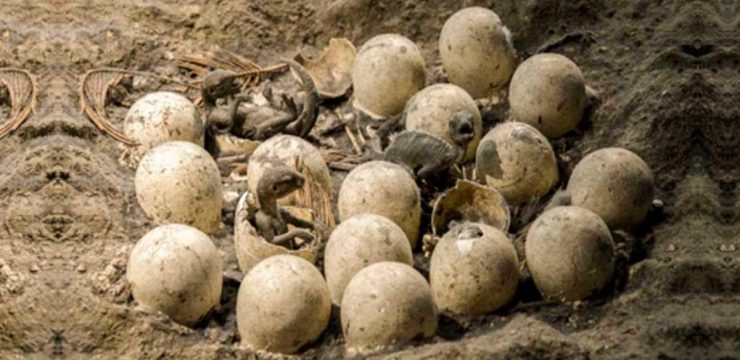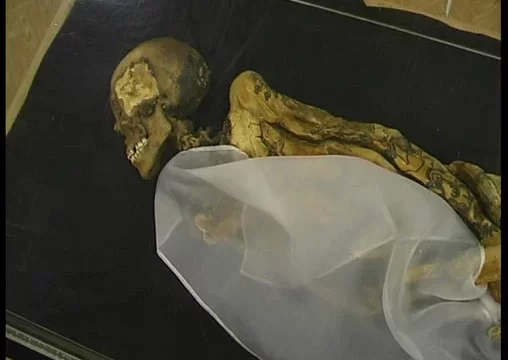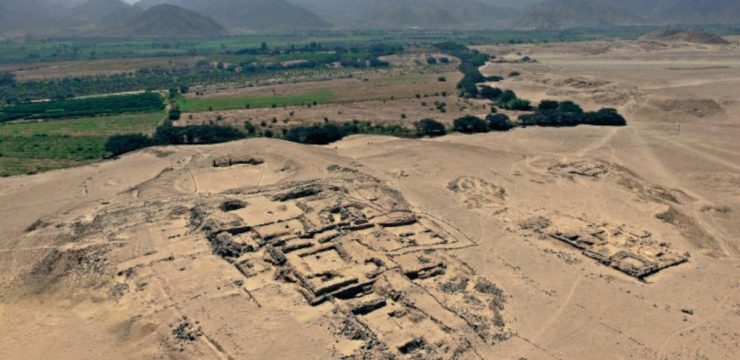A team of Polish archaeologists has recently made one of the most remarkable discoveries in Peru in recent memory. At the ancient El Curaca site, located in the Atico River Valley of southern Peru, they unearthed a collection of circular burial pits lined with stone walls. These graves held the remains of 24 individuals—men, women, and children—who had been buried together in a large, well-built communal grave estimated to be over 3,000 years old. What made this discovery even more significant was the presence of a rich assortment of grave offerings surrounding the bodies, including finely crafted ceramic vessels, tools made from bone and stone, and delicate textiles woven with impressive skill. Due to their fragility, the textiles had to be preserved immediately to prevent further deterioration.

The excavation began in October 2024, conducted by researchers from the Institute of Archaeology at the University of Wrocław. Their work at El Curaca is part of a broader effort to better understand pre-Inca cultures in the region. The findings reveal that the area was once home to a surprisingly advanced and complex society—one with deeply rooted traditions, specialized artisanship, and evidence of both cultural development and violent conflict. These new insights shed light on the sophistication of communities that predate the mighty Inca civilization.
While the artifacts themselves were a valuable treasure trove, the most profound and haunting aspect of the excavation was the discovery of the ancient human remains. Detailed anthropological assessments confirmed that each of the individuals suffered traumatic injuries that led to their deaths. The pattern and severity of these wounds suggested that the group had been victims of a violent confrontation—likely a massacre—presumably tied to warfare between rival groups.
Despite the tragic nature of their deaths, the individuals were buried with great care and reverence. Their bodies were arranged deliberately, and the grave goods included with them indicate that they were respected in death, perhaps honored as fallen warriors or revered members of their society. This ceremonial burial suggests that those who survived the violent episode took the time and effort to lay their dead to rest in a way that commemorated their lives and sacrifices.
The location of El Curaca provides a stunning backdrop for the discovery. Situated in the Atico River Valley with the Pacific Ocean visible in the distance, the area has become a focal point for researchers studying the cultural dynamics of early Peruvian civilizations. The site is beginning to gain recognition for its archaeological importance, especially in helping researchers trace the development of cultural practices long before the rise of the Inca Empire.
Among the most enlightening artifacts found at the site are ceramic fragments dated to the early Formative period, roughly between 1800 and 1000 BC. These ceramics, along with other burial items, offer a window into the daily lives, beliefs, and social organization of ancient people in the region. Notably, many of the artifacts reflect cultural traits linked to the Chuquibamba—or Aruni—culture, a pre-Inca society centered in the Majes River basin, located south of the Atico Valley. The presence of Chuquibamba-style pottery and burial practices in El Curaca suggests that the community had established long-distance trade or cultural exchanges with other coastal societies. These markers indicate that the people of El Curaca were part of a larger network of interaction and influence, contradicting the idea that early Peruvian communities were isolated or rudimentary.
Though the individuals buried at El Curaca likely perished in a violent clash, it’s important to note that most interactions among neighboring groups were probably peaceful. Trade, mutual aid, and shared rituals were common during this period, fostering cooperation and cultural diffusion. This further supports the view that the Chuquibamba culture was well-organized, with established norms and connections stretching beyond their immediate region.
One particularly notable aspect of the site is the meticulous construction of the tombs and the high quality of the grave goods. The pottery is not only beautifully designed but also functional, suggesting a society that placed value on both aesthetics and utility. Meanwhile, the woven textiles found at the site required intense conservation work, given their age and delicate condition. These textiles hold immense value for researchers, as they reveal information about the weaving techniques, dyes, and symbolic motifs used by ancient artisans. They also serve as evidence of the society’s technological capabilities and artistic sensibilities.
To study the human remains in greater depth, the archaeological team has turned to modern technology. They are currently producing 3D models of the excavated skulls, which allows them to analyze facial features, patterns of injury, and other anatomical traits without causing additional harm to the physical remains. This non-invasive approach enables researchers to gather crucial data while preserving the integrity of the artifacts for future study. It also opens up the possibility for digital reconstructions and educational applications that can bring the story of El Curaca to a broader audience.
One particularly striking image from the excavation shows a skeleton wrapped in ancient textiles, surrounded by burial items, including food offerings and intricately made ceramic vessels. Such scenes illustrate the reverence that the living had for the dead and demonstrate how burial practices were deeply intertwined with cultural identity and spiritual beliefs.
The entire initiative is part of what is known as the Atico Project, a comprehensive research effort supported by Poland’s National Science Center. The project is led by Professor Józef Szykulski of the University of Wrocław and involves a diverse team of archaeologists, anthropologists, and students. Collaborators include experts from the Archaeological Museum of Gdańsk, as well as scholars from Peru, Colombia, and Mexico, emphasizing the international importance of the work being done in the Atico River Valley.
This project builds upon earlier archaeological efforts in the region, which uncovered ancient rock art, remnants of Inca roads, and shell mounds created by early fishing communities. These discoveries are helping researchers build a more comprehensive picture of the region’s cultural history, revealing that this part of Peru has long been a hub of human activity, innovation, and adaptation.
As excavation work continues, the Atico Project is doing more than uncovering bones and pottery—it is bringing to life the stories of people who lived, struggled, and built meaningful societies long before history began to take formal shape. Through their work, the researchers are resurrecting a forgotten chapter of human civilization, one that underscores both the resilience and vulnerability of ancient cultures. Thanks to their efforts, the Atico Valley—once a quiet and largely unknown stretch of southern Peru—is now recognized as a vital piece of the puzzle in understanding the pre-Inca world.





